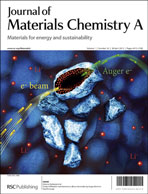Advanced materials for solid-state refrigeration
Abstract
Recent progress on caloric effects are reviewed. The application of external stimuli such as magnetic field, hydrostatic pressure, uniaxial stress and electric field give rise respectively to magnetocaloric, barocaloric, elastocaloric and electrocaloric effects. The values of the relevant quantities such as isothermal entropy and adiabatic temperature-changes are compiled for selected materials. Large values for these quantities are found when the material is in the vicinity of a phase transition. Quite often there is coupling between different degrees of freedom, and the material can exhibit cross-response to different external fields. In this case, the material can exhibit either conventional or inverse caloric effects when a field is applied. The values reported for the many caloric effects at moderate fields are large enough to envisage future application of these materials in efficient and environmental friendly refrigeration.


 Please wait while we load your content...
Please wait while we load your content...